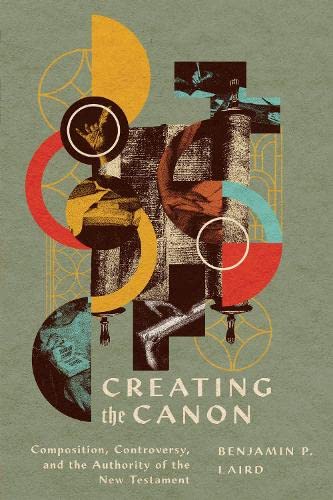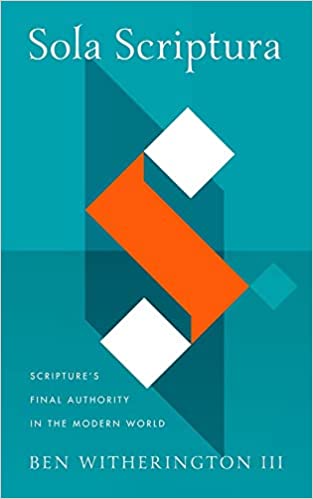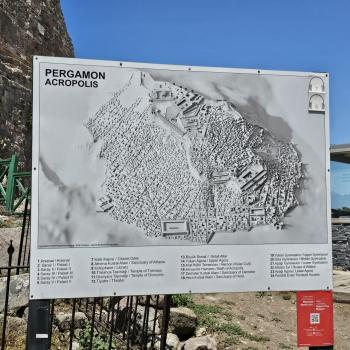Benjamin Laird is no stranger to dealing with complex issues vis a vis the composition and collection of NT, as his previous work on the collection of the Pauline letters shows. This 272 page study which is hot off the IVP press (July 11, 2023) certainly deserves close scrutiny and is to be applauded for its careful historical work involving a variety of difficult issues— who counts as an apostle and what does the phrase apostolic authority mean (and why does it matter), how were the NT documents composed in an age before printing presses, never mind computers, what does careful study of the origins of NT texts and textual criticism tell us, is it true that doctrinal controversies, or ecumenical councils significantly shaped the process of canon formation (or not), and much more. Laird is a reliable guide on a variety of these issues, and proceeds carefully through complicated matters. He is right that neither doctrinal controversies with Marcion, not ecumenical councils, nor the Emperor Constantine himself were decisive in deciding what should be seen as NT (or OT) Scripture. More important were the subcollections of books well before the fourth century, for example of the four Gospels (which were always the four canonical ones. There are no collections with for instance Matthew Mark, Luke and the Gospel of Thomas to judge from the manuscript witnesses), and probably the collection of Paul’s letters, which are indeed our earliest NT documents, was the earliest such subcollection already extant in some form by the time 2 Pet. 3 was written, which at the latest would be in the early second century. As Laird points out, the NT canon turns out to be a collection of these previously recognized subcollections, with the exception of Acts and Revelation.
The fourth century recognition of ‘these 27 books’ and no others’ in several regions of the church (by Athanasius in his Festal letter about 367, in the West by the Pope, and in North Africa all in the fourth century) was simply a culmination of a canonizing process that had been going on for a very long time and at no time were alternative Gospels (including Gnostic ones) or alternative Pauline letters seriously considered to be Scripture by the churches in the east or west. The church did not determine the canon, it recognized the inherent truth and authority in these ‘apostolic’ documents. Indeed, various documents like the Gospel of Peter, the letter to the Laodiceans touted by Marcion, or the Acts of Paul and Thecla were critiqued and rejected because they were pseudonymous.
Laird is right, and agrees quite properly with Bart Ehrman that pseudonymous documents did involve an attempt to give authority to a post-apostolic document that it would not otherwise have by claiming it was written by an apostle. In short, it involved an attempt to deceive and was rightly rejected by the church fathers who were not naive about such things. Laird is also right that it was some of the books that actually made it into the canon– namely the anonymous Hebrews, 2-3 John, 2 Peter, and Revelation that were being debated by the early church and some had doubts about these books being apostolic in character. Laird’s historical judgments about these matters are careful and usually good and to be commended. I agree with him that we do not likely have any pseudonymous documents in the NT canon which we have today.
I do however have some concerns about this books, as follows. In the first place Luke himself tells us in Lk. 1.1-4 that the basis for his consultation and account of ‘the things that have happened among us’ is eyewitnesses and servants or ministers of the word’, and this is surely not limited to those whom Jesus designated as the Twelve, or even a larger group of apostles. Luke himself was neither an original eyewitness or servant of the Word, and so far as we know, he was someone associated with Paul, an apostle by a revelation from the Lord Jesus on Damascus Road. Not only not one of the original Twelve, but also not the new 12th member of the 12 according to Luke’s account in Acts 1 (despite what the Orthodox Church later said). Luke could only be called an ‘apostolic man’ by stretching the term beyond the way Luke himself uses it. He’s the one who uses the phrase the twelve apostles, and then in Acts 13-14 uses the broader sense of someone sent by a church (Antioch) on a mission, in this case Barnabas and Paul.
Paul himself, to judge from 1 Cor. 15 (and comparing 1 Cor. 9— ‘am I not an apostle, have I not seen the risen Lord’) had a rather broad view of what apostle meant— namely someone who saw the risen Lord, and was thereby commissioned to spread the Good Word, both men and women, and in fact Paul says that more than 500 people saw the risen Jesus, and that Jesus appeared particularly to his own brother James, who like Paul was not an original disciple of Jesus. Indeed John 7.5 says James did not believe in Jesus as a messianic figure before Easter, though he knew about his miracles. Now my point is this— the writers of the NT themselves saw eyewitnesses, original servants of the Word and yes apostles as those who passed on the Good News about Jesus, it was not just a matter of apostles, whatever one meant by that term. There were a lot of sent ones— both men and women who bore witness. What this tells us, when NT books were beginning to be collected and treated as sacred texts is that the criteria was not just were they apostolic in origin, but were they TRUE witnesses to what the original eyewitnesses (including apostles) and servants of the Word had preached and delivered to the converts. And this meant these documents had to have come from the first couple of generations of Christians within the first century A.D., either by eyewitnesses, or original preachers, or those who were their co-workers who lived at time like Luke when the eyewitnesses and original preachers could be consulted. In short, there was an inherent time limit to what could be considered to be based on the original eyewitness and apostolic testimony. And in fact, no document in the NT comes from later than that first century period with the possible exception of 2 Peter.
The second thing of note that I wish Laird had discussed is the fact that external evidence is secondary, such as later labels added to documents, and internal evidence of the NT documents themselves must be primary. The church fathers, God bless their hearts, sometimes mixed up the Johns, the James, and the Marys. Was the John who wrote Revelation really the same John as the one associated with the Fourth Gospel? If so he must have had a vocabulary transplant between the writing of the Gospel and the writing of the Revelation because terms like ‘laos’ and ‘ethnos’ get used differently in these two works.
It seems clear enough to me that the John which Polycarp knew is the same John that Papias knew, namely John the Elder, not John son of Zebedee (and so Irenaeus got this wrong as the pupil of Polycarp). About John Zebedee we now have a papyrus suggesting his early martyrdom (see my John’s Wisdom), like his brother James, something Jesus himself predicted for the Zebedee boys. And any fair analysis of the Fourth Gospel will show a total absence of special Zebedee stories where those brother were present to witness— the calling of the Zebedees from their nets, the raising of Jairus’ daughter, or the transfiguration, etc. and yet this very Gospel claims to give eyewitness testimony (see John 19-21). But by whom? To judge from the fact that this Gospel shares exactly one Galilean miracle story in common with the Synoptics (the feeding of the 5,000) instead focusing on miracles that happened in or around Jerusalem, or on a story from Cana not mentioned anywhere in the Synoptics, and tells no tales of exorcism and gives no parables of Jesus like we find in the Synoptics, the likelihood is that this Gospel is by a Judaean disciple of Jesus, not a Galilean one. In fact the Zebedees are not even mentioned in this Gospel until the appendix– John 21, the fishing expedition after Easter. The ‘disciple whom Jesus loved’ is identified not as John Zebedee, but as Eliezar aka Lazarus in John 11, and it is not an accident that the phrase ‘the beloved disciple’ does not even show up in the 4th Gospel until AFTER John 11. How then did this Gospel later get the label ‘the Gospel according to John’, bearing in mind that the ‘according to’ label was likely only trotted out when several Gospels were collected together. You don’t call a Gospel ‘according to John’ unless there is at least one other Gospel according to someone else?
This brings me to an important historical point I wished Laird had dealt with. The labels on ancient documents did not always mean the person named was the author, or sole author of the document. There were composite documents in antiquity, where the name appended to the document meant that the person was either: 1) the author of the document, or 2) the most famous or prominent source of the document, or 3) the final compiler of the document. 2 Peter is very clearly a composite document, the second chapter of which is based on Jude, the third chapter of which shows knowledge of a collection of Paul’s letters, and only the first chapter of which reads like something which the author of 1 Peter might have written, in terms of substance, vocabulary, and syntax. I’ve argued in a published article that there is a Petrine source in 2 Peter 1, telling a personal tale about seeing the Transfiguration. Peter is not the compiler of this document only the most famous and first source, and the compiler in this case which uses Petrine, Jude, and Pauline sources is not claiming any credit for the material. He’s not likely an apostle. For that matter, it looks like Silas actually was the scribe who wrote 1 Peter for Peter. It’s way better Greek than 2 Peter.
The same logic applies to Matthew’s Gospel. One can argue that Matthew, one of the Twelve is the source of the unique material in that Gospel, including Mt. 1-2 for instance, but it is also clear that when 95% of Mark’s Gospel shows up in Matthew’s with a 52% verbatim rate, one has to know there is a literary relationship between these two Gospels, and as the vast majority of Matthean scholars agree, the Matthean version of the common material is a smoothed out, edited version of the Markan material. If I have two students submitting term papers and 95% of one is in the other paper, I’m going to know there is a literary relationship between them for sure.
And this brings me back to the Fourth Gospel. Who exactly is the ‘we’ in John 21 who says ‘and we know that the Beloved Disciple’s testimony is true? My answer would be John, John the elder, who may well be the same person as John of Patmos, returned from exile, and the one who compiled the eyewitness testimony of the Beloved Disciple for all posterity.
In short the fact that later church fathers like Tertullian said that these NT documents were written by apostles or ‘apostolic men’ applying the term in probably a narrower sense than the term is used in the NT itself, is o.k. as far as it goes, but it doesn’t place the emphasis where Luke does— on the original eyewitnesses. But notice that John 21 and for that matter 1 John 1 places the emphasis on eyewitnesses– a person who heard and saw these things, or at least some of them. John of Patmos does not claim to be an apostle or one of the Twelve. He claims to be a visionary, and he was. John called the elder who wrote 2-3 John doesn’t claim to be an apostle. He claims to be an elder— and he was.
And this brings me to one further point. Benjamin Laird is quite right that these matters are complex. And it is important to note that for something to count as Scripture, according to 2 Tim. 3.16, it must be God-breathed. That is, the document must be inspired by God, through whatever human vessel God uses to convey his truth. It is interesting however that the phrase Word of God in Acts and in Paul never refers to a text. It refers to the oral preaching of the Gospel by the servants of the Word which changed lives, and notice that Paul says in 1 Thess. 2.13, that what his audience heard was not merely the words of an apostle, but ‘as it actually is– the Word of God’ which is the change agent. Laird needed to say considerably more about how inspiration from God, not merely apostolic involvement in some documents is what ultimately gave these documents authority. They still have authority today because they tell the truth about God, about salvation history, about other theological and ethical matters, as 2 Tim. 3.16 suggests. Without question the apostles wrote some things that didn’t make it into the canon of the NT. We know this from reading 1-2 Corinthians which mentions other letters Paul, or say Colossians, which mentions a letter to the Laodiceans. Why in God’s providence don’t we have these documents in the canon? My answer would be probably because even apostles can get some things wrong, or say some things that God didn’t want preserved in his Holy Word. At the end of the day, it’s not primarily because the documents in the NT were apostolic that they ended up in the canon, though that is not unimportant. What mattered most was that they were by the eyewitnesses or those who consulted the eyewitnesses or the original preachers of the Word of God, and most importantly— that oral testimony was the Word of God which became the written down Word of God because it was the truth, and nothing but the truth. See my new book Sola Scriptura. coming out from Baylor Press in October.















